JR Shinagawa Station: Train and Shinkansen Transfer Guide

Shinagawa Station is served by JR, Keikyu, and Shinkansen lines, making it very convenient for travel. Learn how to make transfers at Shinagawa Station, shopping facilities inside and near the station, and tips for smooth travel.
Shinagawa Station: Make Transfers Conveniently

Shinagawa Station is one of Tokyo’s main railway stations and services the JR, Shinkansen (bullet train), and Keikyu lines.
The station has great access to Haneda Airport, Narita Airport, Tokyo, and other major sightseeing areas. You will likely use it at least once if you’re thinking of traveling in Tokyo. Due to its convenience, many people use the station to transfer between the JR trains to the Keikyu trains and the Shinkansen.
This article introduces how to transfer to other lines from each JR Line so that even people visiting the station for the first time will be able to transfer smoothly!
We highly recommend travelers use the JR Pass to save money on traveling on JR trains. This discount pass not only helps with navigating to and around Shinagawa Station, but throughout the rest of Tokyo and beyond.
Shinagawa Station Transfer Guide
The 3 Lines in Shinagawa Station
- Start From the JR Line! About JR Shinagawa Station
- Keikyu Line – Get to Haneda Airport and Asakusa
- Shinkansen – Traveling to West Japan (Kyoto, Osaka, Fukuoka, Nagoya)
- Bus – To Odaiba and Roppongi
- Shopping Centers and Aquarium Nearby
Read also
The Three Lines in Shinagawa Station
Three lines – the JR Line, Keikyu Line, and Tokaido-San’yo Shinkansen – run through Shinagawa Station.
The JR Line is most recommended to those heading to sightseeing areas in the city. It’ll take about ten minutes to get to Tokyo (178 yen) or to Shibuya (178 yen) while it’ll take about 20 minutes to get to Ueno (208 yen) or to Shinjuku (208 yen). The line also connects to other areas such as Yokohama and Chiba, making it easy to get to the greater Tokyo area.
The Keikyu Line is convenient for traveling to Haneda Airport and Asakusa. You can travel to either area without making any transfers.
The Tokaido Shinkansen is a bullet train that travels to areas such as Nagoya, Kyoto, and Osaka. Shinagawa Station is compact compared to Tokyo Station, making it easy to make transfers at this station.
Start From the JR Line! About JR Shinagawa Station
In this article, we’ll introduce how to transfer to other lines from JR Shinagawa Station.
Within JR Shinagawa Station, there are many different JR train lines, such as the Yamanote and Keihin-Tohoku lines that travel through the station. The station also has many platforms. For that reason, we should first understand the overall structure of JR Shinagawa Station.
The platform for JR Shinagawa Station is on the first floor. After you’ve gotten off the train, use the stairs, escalators, or elevators to head up to the second floor where the ticket gates are located.
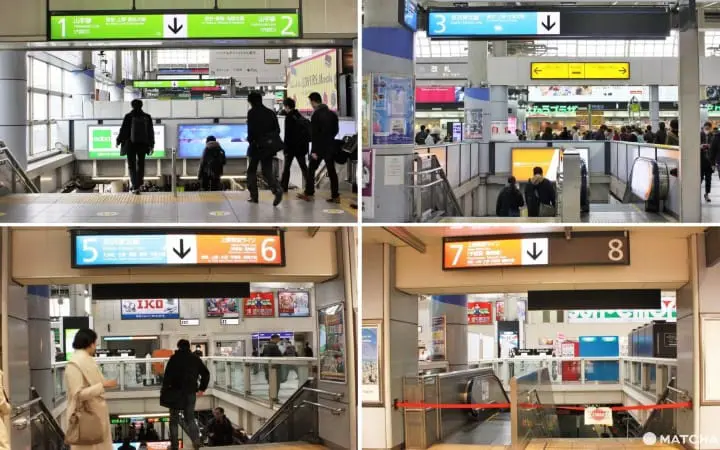
Platforms 1 - 7
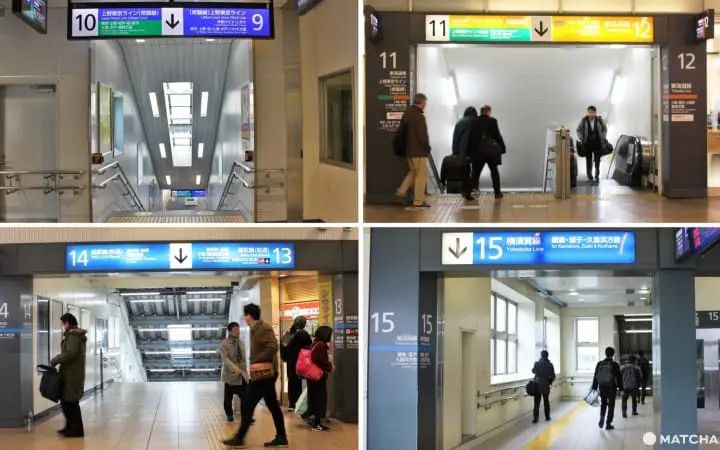
Platforms 9 - 15
Refer to the table below to check beforehand which numbered platform the line you are riding will stop at.
| Platform | Line | Major Destinations |
| 1, 2 | Yamanote Line | Tokyo, Ueno, Shibuya, Harajuku, Shinjuku |
| 3 | Keihin-Tohoku Line (bound for Omiya) | Tokyo, Ueno, Akihabara, Nippori, Oji, Omiya |
| 5, 6 | Keihin-Tohoku Line (bound for Ofuna), Ueno-Tokyo Line | Yokohama, Sakuragicho |
| 11, 12 | Tokaido Line / Ueno-Tokyo Line, Tokaido Line | Yokohama, Odawara, Atami |
| 13, 14 | Yokosuka Line, Sobu Main Line | Kinshicho, Narita Airport (Narita Express) |
| 15 | Yokosuka Line | Kamakura |
Keikyu Line – Get to Haneda Airport and Asakusa
Without further ado, we’ll introduce how to transfer to each line from JR Shinagawa Station! First is how to transfer to the Keikyu Line.
The Keikyu Line links together areas such as Tokyo, Yokohama in Kanagawa, Yokosuka, and Misaki. The fastest way to get to Haneda Airport is by the Airport Limited Express, which will take about twenty minutes (327 yen) to arrive at the airport.
The Toei Asakusa Line, a line that passes through Asakusa Station, also services this station, allowing you to get to Asakusa in 25 minutes (422 yen) without transfers. To go to Asakusa, take the train at Platform 2 on the Keikyu Line. Please note that you must transfer at Sengakuji Station if you take a train bound for Sengakuji Temple.
Transferring to the Keikyu Line

When transferring from the JR Line to the Keikyu Line, look for a large hanging banner (pictured) that has “Transfer to Keikyu Line (Only for Changing Trains)” printed on it!
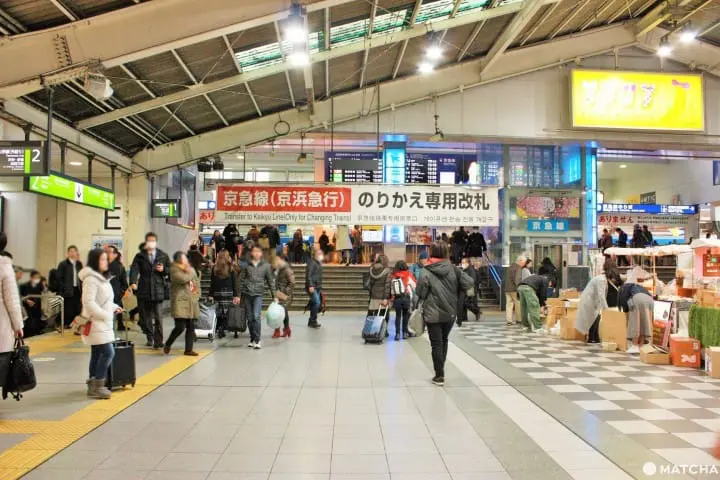
After arriving at the JR platform, head towards the Central Gate.
Head upstairs from Platforms 1 or 2 (Yamanote Line) and you’ll see a hanging banner like pictured above.
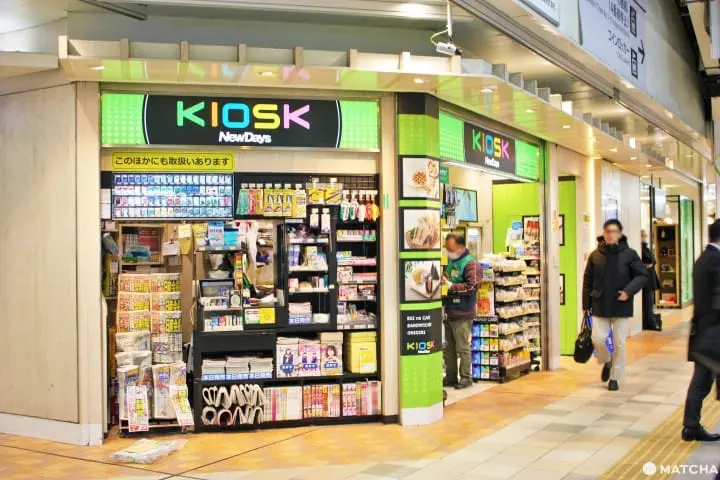
If you are transferring from Platform 5 and after, go in the opposite direction of the Shinkansen platform and head towards the convenience store, KIOSK.
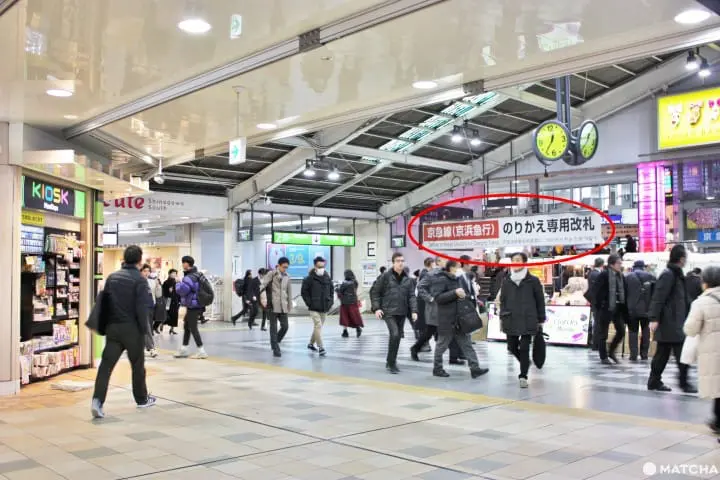
Upon arriving at KIOSK, you’ll see the hanging banner on your righthand side. The gate for the Keikyu Line is beyond this point.
If you wish to travel to Haneda Airport by the Keikyu Line, then take the train bound for Haneda Airport from Platform 1 located right beyond the gate entrance.
Keikyu Line Transfer Guide: a large hanging banner printed with “Transfer to Keikyu Line (Only for Changing Trains)”
Ticket Office
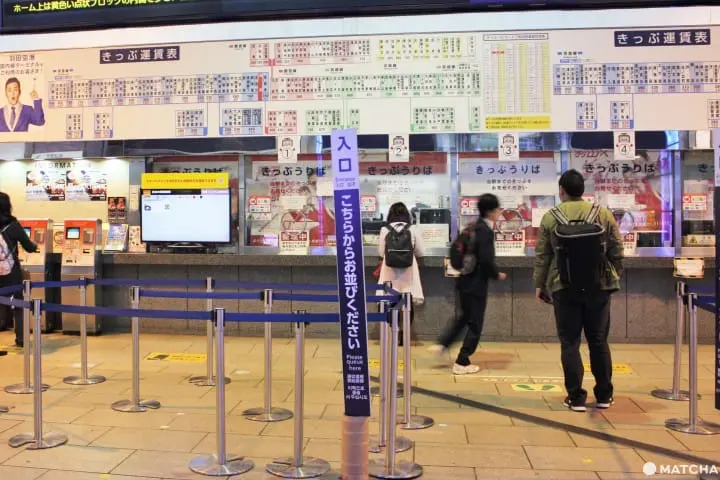
The Keikyu Line ticket office is located next to the transfer gates. There are also ticket windows with attendants, so ask them any questions if you feel uneasy.
Shinkansen – Traveling to West Japan (Kyoto, Osaka, Fukuoka, Nagoya)
It is also fairly simple to transfer to the Tokaido-San’yo Shinkansen from the JR Line. As Shinagawa Station is smaller than Tokyo Station, it won’t take long to transfer.
From Shinagawa Station, you have a choice of three Shinkansen trains: the Nozomi, Hikari, or Kodama. This is the Shinkansen you use to get to Nagoya, Kyoto, Osaka, Hiroshima, or Hakata in western Japan.
Transferring to the Shinkansen
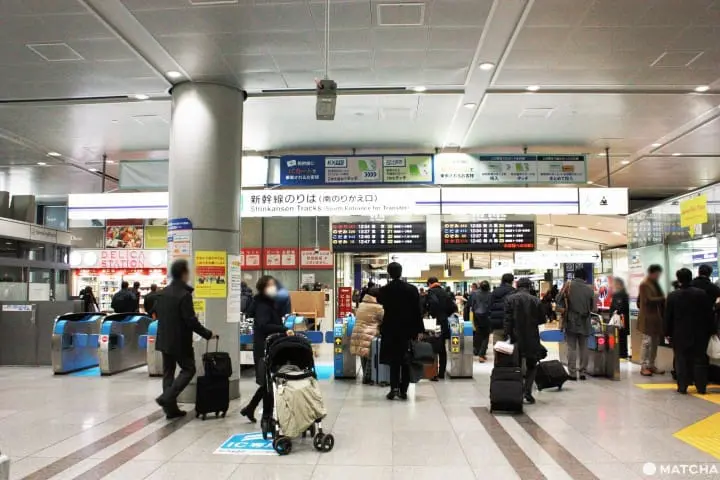
From the platform, head upstairs to the Central or North Gate.
If go to the Central Gate, you can use the Shinkansen South Transfer Entrance. If you are near the North Gate, then go through the Shinkansen North Transfer Entrance. Either way, you’ll arrive at the tracks by simply walking and following signs printed with “Tokaido-San’yo Shinkansen.”

The entrance to Platform 15 is nearby. Continue inside to find the ticket gates for the Shinkansen.
Those with seats in cars 1 to 5 should transfer at the South Transfer Entrance while those with seats in cars 6 to 16 are recommended to use the North Transfer Entrance. By doing so, you will arrive on the platform conveniently near your seat!
Shinkansen Transfer Guide: signs printed with “Tokaido-San’yo Shinkansen”
Bus – To Odaiba and Roppongi

You can directly travel to Odaiba or Roppongi by taking the bus from Shinagawa Station.
To get to the bus stop area, exit the ticket gates once from the JR Central Gate. Once you leave the Central Gate, there will be two exits, the Konan Exit (East Exit) or the Takanawa Exit (West Exit). Each exit has bus stops.
Konan Exit Buses: bound for Odaiba, Tokyo Tower area
Takanawa Exit Buses: bound for Roppongi Hills area
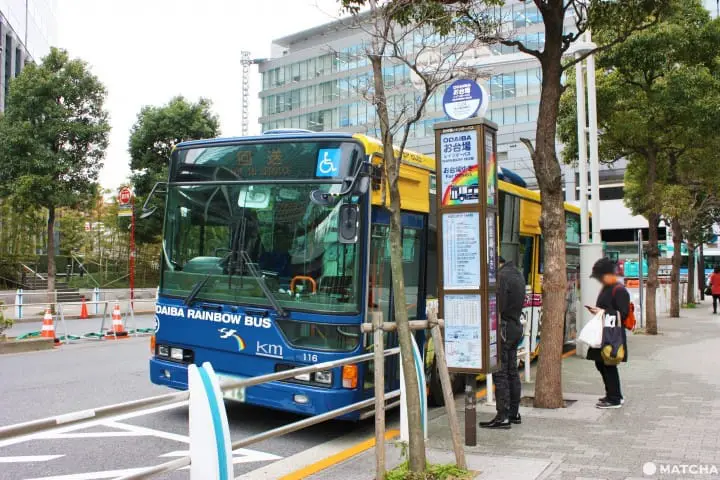
If going to either Odaiba or Tokyo Tower, then head to the Konan Exit. Exit the JR Central Gate, then continue right and go downstairs to take the bus at the bus terminal. To get to Odaiba, it will take seventeen minutes on the Odaiba Rainbow Bus (210 yen). To get to Tokyo Tower, it will take 35 minutes on the Toei Bus (Hama 95 boud for Tokyo Tower) (210 yen).

If going to the Roppongi area, head to the Takanawa Exit. Exit the JR Central Gate, then continue left and exit through the Takanawa Exit. After exiting, cross the pedestrian bridge on your righthand side to get to the sidewalk on the opposite side. The bus stop will be at this sidewalk. To get to Roppongi Hills, it will take 25 minutes on the Toei Bus (Tan 96 bound for Roppongi Hills) (210 yen).
Shopping Centers and Aquarium Nearby!

The ecute Shinagawa, a shopping center inside the JR station, contains souvenir shops, cafés, and a bookstore. You stop by if you have time to spare before your transfer!

Picture from Maxell Aqua Park Shinagawa – Aquarium And Interactive Art Space
You’ll also find atre Shinagawa, a shopping center, at the Konan Exit after exiting the ticket gates. Wing Takanawa, another shopping center, and Aqua Park Shinagawa, an aquarium, are located outside the Takanawa Exit. This area also has several hotels and restaurants, making Shinagawa is an ideal area to explore.
5 Recommended Restaurants Within Walking Distance of Shinagawa Station
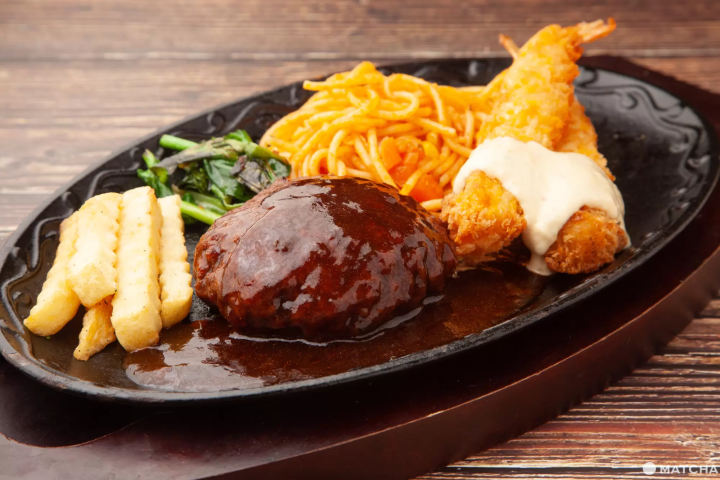
Here, we introduce five restaurants located near Shinagawa Station, all within walking distance, allowing you to feel busy Tokyo's atmosphere as you make your way to them.
Tsubame KITCHEN (Atre Shinagawa)
This Western-style restaurant is located on the 4th floor of Atre, a shopping mall directly connected to Shinagawa Station.
« Yoshoku » or Western-style restaurant is a distinct genre unique to Japan. During the Meiiji era (1868-1912), it was initially served as banquet food for distinguished guests but by the end of the Meiji era, cooks in the city or towns devised Japanese-style Western cuisine, which became popularized among the general public by the Taisho era (1912-1926). The menu at the time consisted of steaks, omelettes, pasta, sandwiches, and although these dishes are eaten regularly today, they were very rare and special for the Japanese people at the time.
Tsubame KITCHEN is popular for its special omelette rice, reminiscent of the history of such Western-style restaurant from the past. The fluffy omelette is covered with a demi-glace sauce.
Address: Tokyo, Minato-ku, Konan, 2-18-1 4F Atre Shinagawa
Access: 1 minute walk from JR Shinagawa Station Konan Exit
Azabu Sabo
The concept of this stylish place is « an urban sweet shop ». This restaurant is loved by a wide range of people, from the older generation nostalgic of the past to the younger generation, for its traditional food and Japanese desserts.
In addition to its dining menu, the Shinagawa branch offers Chinese yakisoba and ramen, perfect for those who wish to fill up on a full meal. Traditional Japanese desserts such as anmitsu and zenzai, as well as parfaits made with plenty of matcha are classics that we recommend. It is also possible to just have tea.
Address: Tokyo, Minato-ku, Takanawa, 4-10-18 2F Wing Takanawa
Access: 10-minute walk from JR Shinagawa Station Takanawa Exit
China Shadow
China Shadow is a restaurant where you can enjoy dishes based on classic Chinese cuisine combined with modern ingredients and essence. The view of Tokyo is another reason for its popularity.
In addition to delicate dim sum courses carefully prepared one by one by a dim sum master, and formal courses with Peking duck and wine pairings, afternoon tea can be enjoyed in the afternoon.
If you wish to enjoy sophisticated and refined Chinese cuisine in Shinagawa, this is the place to go.
Address: Tokyo, Minato-ku, Konan, 2-16-1 26F Shinagawa East One Tower
Access: 10-minute walk from JR Shinagawa Station Konan Exit
Sushi Isomatsu
This sushi restaurant is neither upscale nor a conveyor belt place, but reasonably priced with a style just in between.
With Isomatsu’s Seasonal Course (8 dishes, 6000 yen) and Isomatsu’s Special course (10 dishes, 10,000 yen) you can enjoy sushi with the season’s freshest ingredients. You can of course order sushi a la carte to your liking as well.
There is a wide selection of beer, shochu, Japanese sake, and Japanese wine.
Sushi Isomatsu is decorated with a Japanese-style chandelier specially made by a temple carpenter and jazz music plays in the background, making it a modern yet relaxing restaurant.
Address: Tokyo, Minato-ku, Konan, 2-3-13 2F Shinagawa Front Building
Access: 5-minute walk from JR Shinagawa Station Konan Exit
Kyoto Hyoto Shinagawa
A Japanese restaurant where the staff dressed in kimono serve you in a delicate refined manner. The restaurant attracts many customers from overseas as well as local, with its fine high quality Japanese cuisine such as pork shabu-shabu, snow crab shabu-shabu, and wagyu steak.
Dishes can changed if you there are ingredients you cannot eat due to allergy, religious reasons, or preference. Menus in foreign languages are also available and staff can speak simple basic English.
Address: Tokyo, Minato-ku, Konan, 2-15-2 1F Shinagawa Intercity Tower B
Access: 7-minute walk from JR Shinagawa Station Konan Exit
3 Hotels Around Shinagawa Station
Here, we introduce three hotels located close to Shinagawa Station, just a short taxi ride away.
Takanawa Kankōji (Grand Prince Hotel Takanawa)
Takanawa Kankōji is a traditional Japanese inn with 16 rooms located within the Grand Prince Hotel Takanawa. Surrounded by a Japanese garden, it offers a serene environment that combines traditional Japanese beauty with modern comfort. In 2024, it earned a 5-star rating in the hotel section of the Forbes Travel Guide, achieving this honor for the fourth consecutive year. All rooms are suites, providing a luxurious and private space. The hotel features a guest-only lounge, a large bath including an open-air bath, and refined Japanese hospitality, offering a special experience for visitors. The hotel is conveniently located within walking distance from Shinagawa Station.
Address: Tokyo, Minato-ku, Takanawa, 3-13-1
Access: 10-minute walk from Shinagawa Station
The Strings by InterContinental Tokyo
The Strings by InterContinental Tokyo is a luxury hotel directly connected to Shinagawa Station. Its grand lobby with a stunning atrium space, sophisticated design, and luxurious interior captivate visitors. The modern and stylish rooms offer views of Tokyo Bay and the city skyline, making them particularly popular. The hotel’s restaurants serve a variety of international dishes, providing a comfortable stay for both business and leisure. Its convenient access and high level of hospitality have earned excellent reviews both domestically and internationally.
Address: Tokyo, Minato-ku, Konan, 2-16-1
Access: 5-minute walk from Shinagawa Station
Tokyo Marriott Hotel
The Tokyo Marriott Hotel is an international hotel located in the tranquil Gotenyama area of Shinagawa. Surrounded by lush greenery, it offers a relaxing space away from the hustle and bustle of the city. The rooms, averaging 38 square meters, are equipped with sophisticated interiors and modern amenities, ensuring a comfortable stay. The hotel features a restaurant, bar, and fitness center, catering to a variety of needs. The combination of its international brand reputation and peaceful location makes it an ideal choice for both business and leisure.
Address: Tokyo, Minato-ku, Takanawa, 3-7-1
Access: 10-minute walk from Shinagawa Station
Hotels near Atre Shinagawa
Hotels near Maxell Aqua Park Shinagawa
Navigate Through Shinagawa Station
Shinagawa Station, out of all the major stations in Tokyo, is relatively small and easy to use when transferring trains compared to Tokyo and Ueno stations. The station is known for its great access, with direct connections to Haneda Airport, Narita Airport, and sightseeing areas in Tokyo.
If you’ll be making any train transfers, remember to prepare your Shinkansen tickets and IC card beforehand for smooth travels. Have a nice trip without losing your way!
Hotels near Shinagawa Station
This is the official account of MATCHA's editorial department. Our articles feature useful travel information for visitors to Japan, from how-to guides to recommended places to visit.




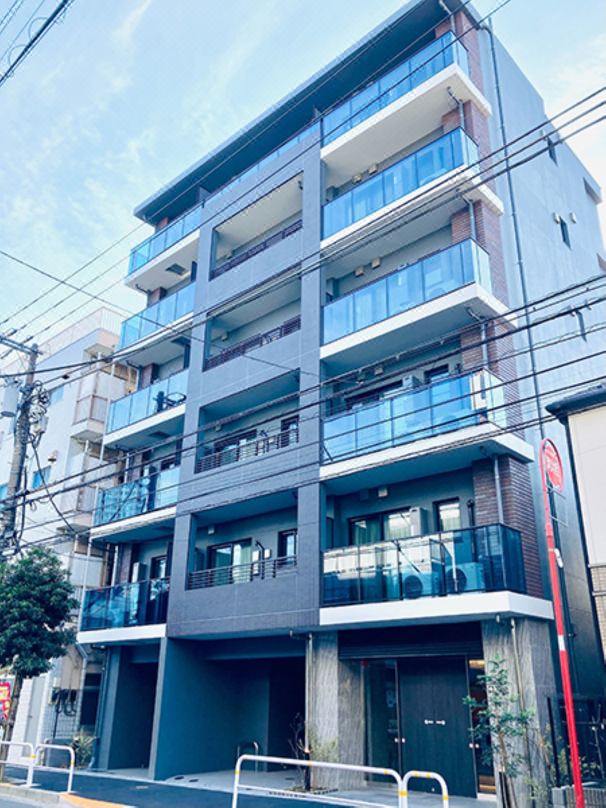


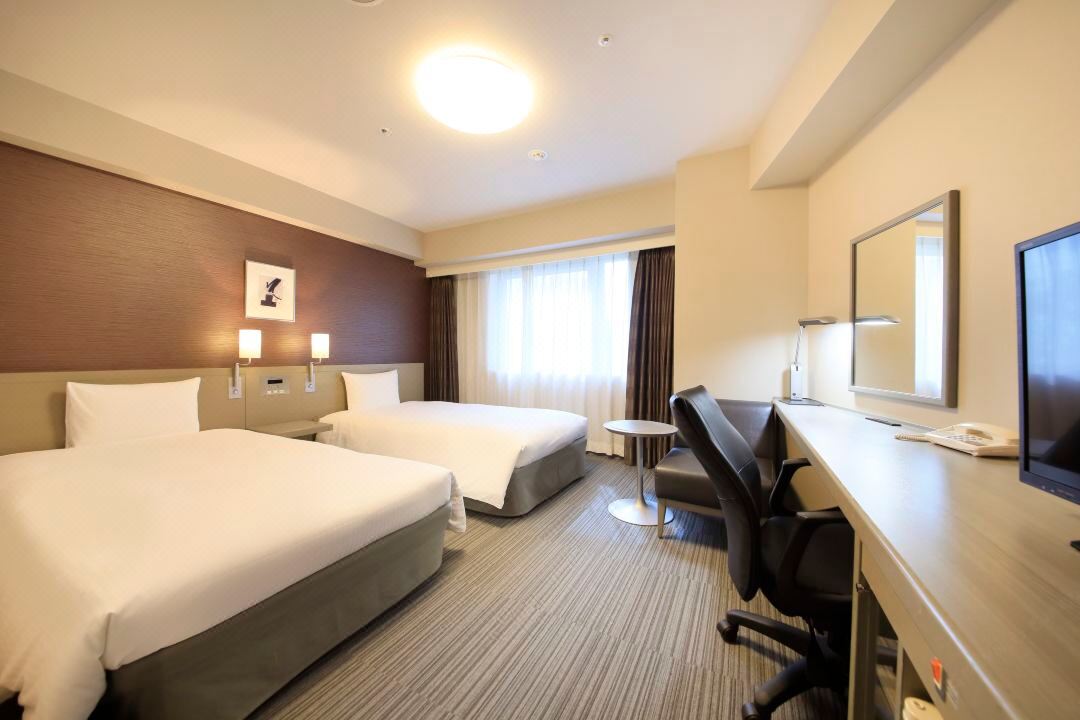

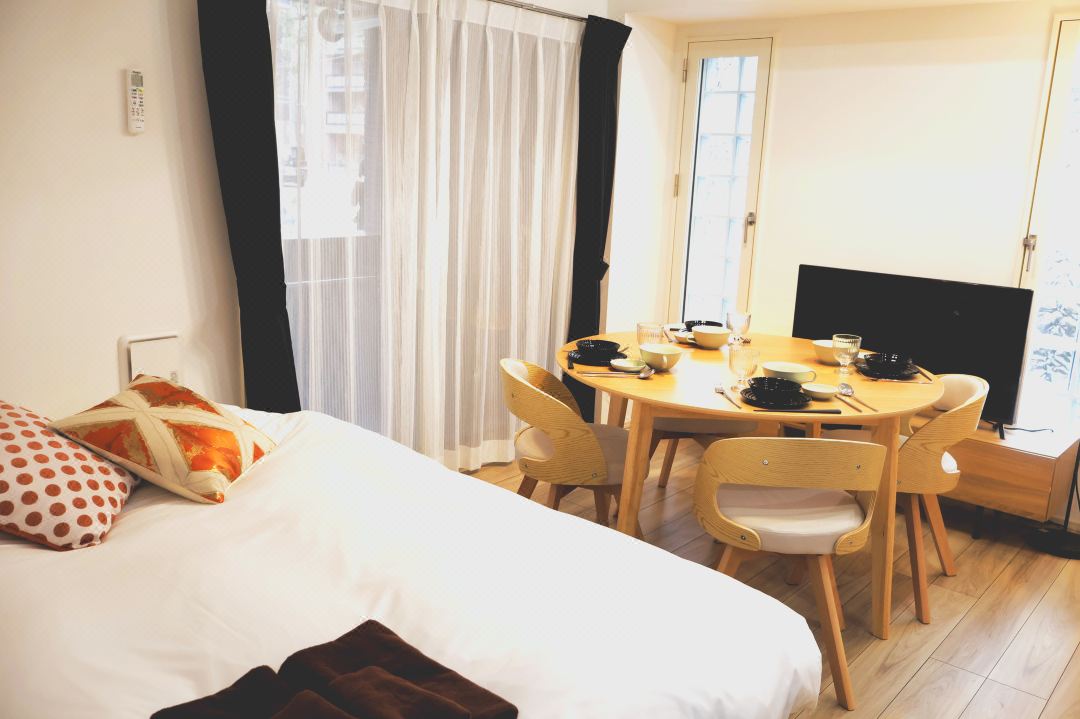

















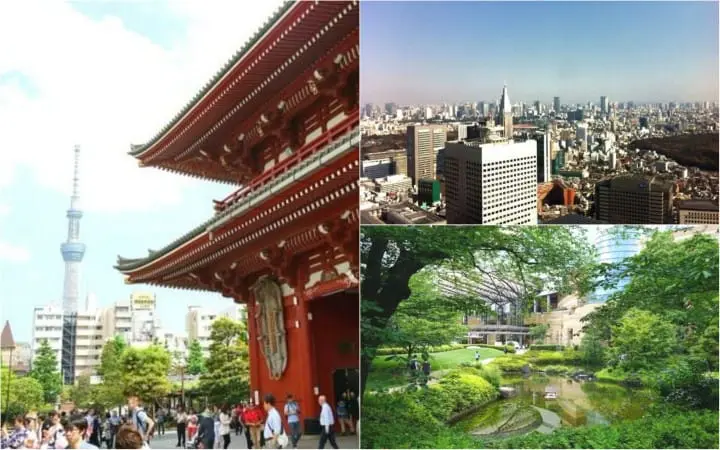




























![[2026] Top 5 Strawberry Picking Spots in Tokushima, Naruto| Farms and Access Guide for January to May](https://resources.matcha-jp.com/resize/720x2000/2025/03/06-227165.webp)



